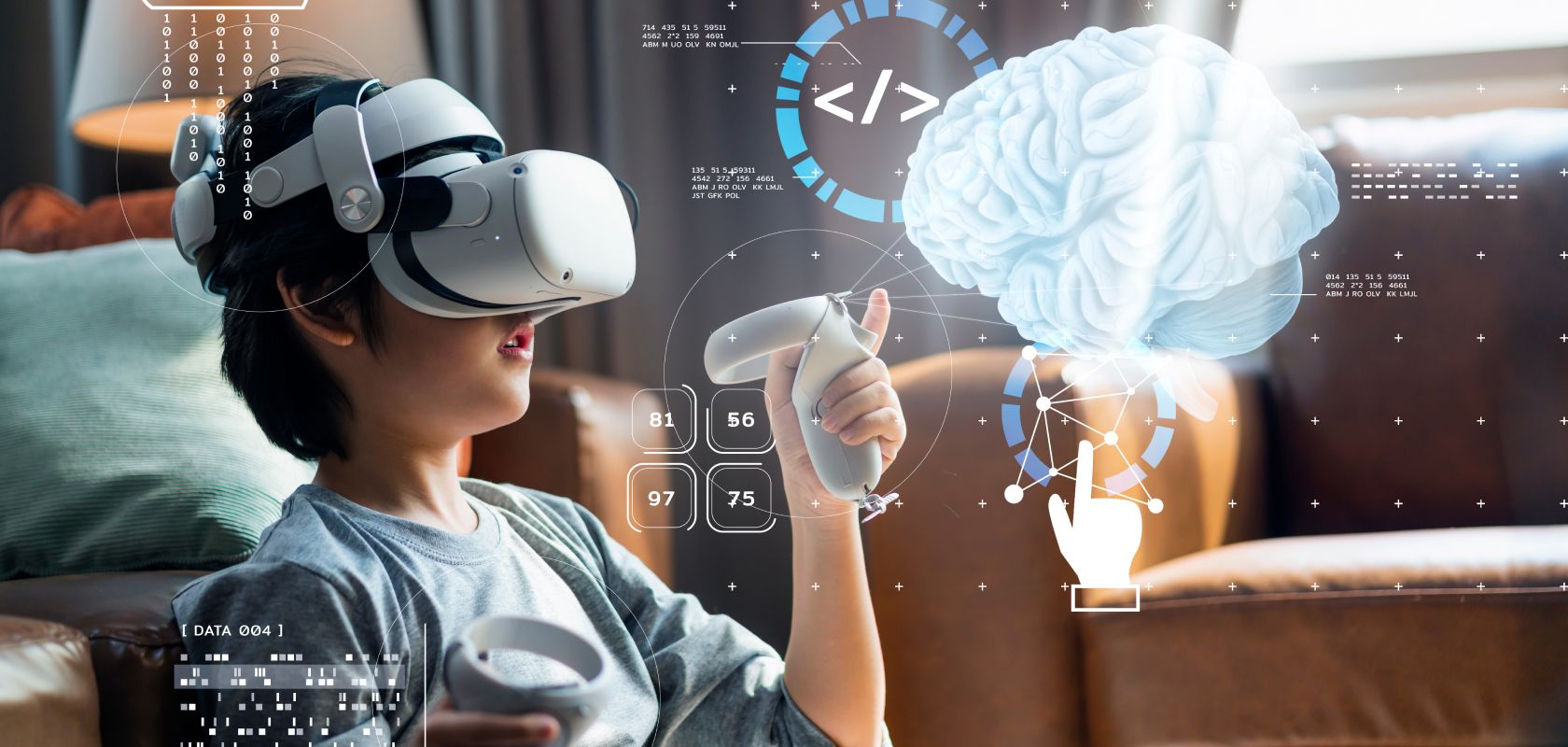Augmented reality technology is transforming education by offering immersive, interactive and engaging learning experiences. With ar, students can explore and interact with virtual objects in the classroom, enhancing their understanding and retention of complex concepts.
Augmented reality, or ar, has emerged as a game changer in modern education. This digital innovation creates a unique learning environment that combines the real and virtual worlds, offering a new level of immersion as students interact with virtual objects and data overlaid on the real world.
Classroom learning is not limited to textbooks and lectures anymore. With ar, students can experience complex subjects, such as science and history, through interactive simulations, games, and visualizations. This technology has the potential to stimulate and motivate learners of all ages, promoting active participation and increasing knowledge retention. In this article, we will explore how augmented reality technology is transforming education and changing the way we learn.

Credit: vection-technologies.com
Understanding Augmented Reality In Education
Definition Of Augmented Reality (Ar) In The Context Of Education
Augmented reality (ar) is a digital innovation that enables students to interact with virtual elements superimposed onto the physical world using mobile devices. In the context of education, ar involves the integration of digital content with the real world, creating an immersive learning environment that encourages student participation.
Ar technology uses sensors, cameras, and other digital tools to create an interactive and engaging experience.
How Ar Enhances The Learning Experience For Students
Ar has the power to transform education by creating a more hands-on and interactive learning environment. Here’s how ar enhances the learning experience for students:
- Ar allows students to visualize complex concepts and theories in a more tangible way, making it easier for them to understand challenging subjects.
- Ar enables students to interact with virtual objects in an immersive way, promoting engagement and improving their retention of knowledge.
- Ar stimulates students’ critical thinking, creativity, and problem-solving skills by providing new perspectives and challenging them to think outside the box.
- With ar technology, students can learn at their own pace using interactive games and quizzes, making learning more fun and engaging.
- Ar technology bridges the gap between theoretical learning and practical application, providing students with the opportunity to experiment with and apply learned knowledge in real-world situations.
The Role Of Ar Technology In Revolutionizing Education
Ar is revolutionizing education by improving the way students learn and interact with each other and their surroundings. Here’s how ar technology is transforming education:
- Ar is expanding the possibilities of learning beyond traditional methods by providing a more interactive and engaging learning experience.
- With ar, students can learn anytime and anywhere, freeing them from the constraints of the traditional classroom setting.
- Ar promotes collaborative learning by allowing students to work together on projects, share information, and create a more inclusive learning environment.
- Ar technology fosters student creativity and imagination by presenting opportunities for students to design, build, and test their own ar applications.
- Ar creates new opportunities for student assessment and evaluation, enabling teachers to measure student knowledge and progress through interactive assessments and virtual simulations.
Overall, ar technology is transforming education, giving students new and exciting ways to learn, interact, and explore the world around them.
Applications Of Augmented Reality In The Classroom
Augmented reality (ar) technology is changing the way teachers deliver and students receive information in the classroom. Ar is transforming traditional learning methods and enhancing the overall educational experience. In this post, we’ll explore the numerous applications of augmented reality in the classroom and how it can transform education through digital innovation.
Examples Of How Ar Is Currently Being Used In Classrooms
Ar can take learning beyond the textbook and traditional classroom experience. Here are some examples of how ar is currently being used in classrooms:
- Ar is being used in science classes to bring experiments to life, allowing students to experience the scientific method in a more interactive and engaging way.
- Math teachers are using ar to help students visualize complex concepts. Ar can help students see 3d shapes and figures, which improves their spatial awareness and problem-solving skills.
- History teachers are using ar technology to bring history to life. With ar, students can explore historical events and artifacts in an immersive way.
Benefits Of Using Ar In Various Subjects Such As Science, Mathematics, And History
Ar provides an opportunity to engage students in ways that traditional teaching methods cannot. Here are some benefits of using ar in various subjects:
- In science, ar can help students better visualize complex scientific concepts and experiments. This type of immersive learning experience can lead to better retention of information.
- Math teachers can use ar to help students understand abstract algebraic concepts. By using ar to bring math equations to life, students can learn through visual and interactive experiences.
- Ar is particularly useful in history classes because it can help students see historical events and artifacts in an immersive way. With ar, students can experience history as if they were there, improving their understanding and engagement.
Ar Applications For Students With Learning Disabilities
Ar technology can be particularly valuable for students with learning disabilities. Here are some ar applications for students with learning disabilities:
- Ar technology can help students with dyslexia better understand text. By changing the font style or color, ar can make reading easier for these students.
- Students with adhd can benefit from ar’s interactive and engaging nature. Ar can help these students stay focused and engaged with the material.
- Ar technology can also help students with autism better understand social situations. By simulating social environments, ar can assist these students in developing important social skills.
Ar technology is transforming education in ways that were once unimaginable. Teachers can now deliver educational content in a more engaging, interactive, and immersive way, while also helping students with learning disabilities. With ar, students can be more motivated to learn and retain information better, leading to better student outcomes.
Challenges And Considerations For Implementing Augmented Reality In Education
Augmented reality (ar) has the potential to transform the education system by providing an interactive and immersive learning experience for students. However, there are several challenges and considerations that schools and districts need to consider before implementing ar in the classroom.
In this section, we will explore some of the key factors that need to be addressed.
Cost Considerations For Schools And Districts
Implementing ar in education requires a significant investment in technology, software, and hardware. Here are some of the cost considerations that schools and districts need to keep in mind:
- The cost of ar hardware such as smartphones, tablets, and goggles
- Software licensing costs and ongoing maintenance fees
- Additional hardware requirements such as servers and routers
- The need for high-speed internet connectivity
With these costs in mind, schools and districts need to carefully evaluate the potential return on investment before making a commitment to ar implementation.
Training And Support Needed For Teachers To Successfully Integrate Ar Into The Classroom
Integrating ar into the classroom is not as simple as installing software and hardware. Teachers require training and support to successfully incorporate ar into their teaching methodology. Some of the key considerations include:
- Professional development programs to train teachers on ar technology
- The time required for training and integration of ar into lesson plans
- Ongoing technical support to troubleshoot any issues
- Availability of technical support staff to assist teachers in case of issues related to ar
Effective training and support for teachers can help schools and districts overcome the challenges of ar implementation.
Ethical Considerations Such As Data Privacy And Security
When implementing ar in education, ethics takes center stage. Schools and districts need to ensure that students’ data is kept private and secure. Here are some of the key ethical considerations:
- Data privacy regulations, such as gdpr and ccpa, must be considered.
- Personal information gathered through ar must be kept only for necessary purposes.
- Schools must ensure students’ safety while moving around ar equipment.
Overall, schools and districts must consider the ethical implications of integrating ar into the classroom. By addressing these ethical concerns, schools can ensure student data security while still leveraging ar as an educational tool.
While ar can transform education through digital innovation, proper consideration must be given to cost, training, and support for teachers, as well as ethical considerations such as data privacy and security. With careful planning and execution, ar can revolutionize how students learn and engage with course material in the classroom.
Frequently Asked Questions Of Augmented Reality In The Classroom: Transforming Education Through Digital Innovation
What Is Augmented Reality And How Does It Work In Education?
Augmented reality (ar) is an interactive experience where objects are overlaid in the real world. With ar, students can experience new ways of learning through digital innovation. Ar works by using a smartphone or tablet to project information onto the real world.
How Is Augmented Reality Being Used In The Classroom?
Augmented reality is being used in the classroom for a variety of purposes, including interactive learning experiences, virtual field trips to remote locations, and engaging story-telling sessions. Teachers can use ar to enhance their curriculum and provide students with hands-on experiences.
What Are The Benefits Of Using Augmented Reality In The Classroom?
The benefits of using augmented reality in the classroom are numerous, including improved student engagement, enhanced learning experiences, and higher retention rates of educational material. Ar can also promote creativity, collaboration, and critical thinking skills in students, making it an increasingly popular tool for educators.
Conclusion
Augmented reality is a powerful and highly innovative tool for transforming the classroom and enhancing the educational experience for students. As we have seen, this technology is able to engage students to a degree where they are excited about learning and eager to explore new opportunities.
The potential of ar in education is boundless, and as the technology continues to develop, we can expect to see more and more schools incorporating it into their curricula. By embracing augmented reality in the classroom, teachers can create a learning environment that is more dynamic, interactive, and engaging than ever before.
From reinforcing core concepts and introducing new ones to giving practical demonstrations and inspiring creativity, ar holds enormous promise for revolutionizing the way that we educate our children. The future of education is more exciting than ever, and with the help of cutting-edge technologies like augmented reality, we can empower the next generation to reach their full potential.

